Introduction
Art as a complex process involving a variety of manifestations of a creative thought provides an abundance of interpretations and meanings that the audience is persuaded to experience under the influence of an artist. Regardless of the intentions and narratives encoded in a given work of art and the medium used by an artist, one might not be able to interpret and adequately analyze the meaning of work outside the context. Indeed, the context that includes social realities, geography, nationality, historical period, artistic movements, as well as the personal life experiences of an artist is a decisive element when it comes to artwork analysis. Therefore, a contextual analysis method is used for this essay to analyze the works of two prominent artists, namely German photographer Lothar Wolleh and French painter Yves Klein.
Both artists performed and were created around the same time in the middle of the twentieth century in Europe. They both practiced newly emerging styles in arts and contributed their stylistic manners and techniques producing new artistic meanings. An important feature that serves as a starting point for the analysis of the works of these artists is their affiliation with the French artistic school Nouveau Réalisme (New Realism). According to Watanabe, the stylistic and poetic characteristics of this movement were related to the “making of a new sight or new perceptual approach to reality” (85). Therefore, this paper aims to identify the differences and similarities between the works of Lothar Wolleh and Yves Klein. The goal is to identify how the search for a new approach to the perception of reality unfolds in Yves Klein’s paintings and Lothar Wolleh’s photographs under the influence of Nouveau Réalisme. It is argued that both artists have developed unique styles integrating new realism, conceptualism, and minimalism to unfold the issues of void, isolation, as well as the new beginning in post-war Europe.
Similarities between Yves Klein’s and Lothar Wolleh’s Works
The basis for the similarities between the two artists from the perspective of the context in which they were creating their works is comprised of the historical period, geographical location, and artistic movement affiliation. Both artists created in the style of conceptual art using minimalism in their works to denote the realities of life in the post-war period in Europe. The combination of the devastation and void with the feelings of a new beginning and unrealized potential is inherent in their artistic styles (Johnson 172-173). The movement Nouveau Réalisme emerged in the middle of the twentieth century in Paris and included over a dozen European artists, including painters, photographers, art performers, sculptures, and others (Watanabe 85-86). The principles of depicting reality with a free interpretation and a flow of thought were the main guideline of the art school, which indicates the core of similarities between Yves Klein and Lothar Wolleh.
Overall, the matters transmitted through the artistic works of the photographer and the painter are similar due to the context in which they created their works. Indeed, the ending of World War II and the consecutive social and political changes, as well as the philosophical implications for the future and the place of a human in society were the tentative issues (Watanabe 85). Therefore, both Yves Klein and Lothar Wolleh were mainly concentrated on the invention of a new way of artistic manifestations through the lenses of minimalism and conceptualism. As the antecedents of abstractionism, New Realism followers were unrestricted to the visual means and were eager to invent new controversial ways of interpreting reality in its complexity. Indeed, the works of both artists might be perceived and analyzed as conceptual artworks that denote significant existential, social, and philosophical constructs implied in the simple and even dematerialized visual representation.
The similarity in the use of color is identified in the stylistic approaches of the two analyzed artists. Indeed, the paintings of Yves Klein are predominantly monochromatic or are created using a limited number of paint colors. Moreover, the significance of the artistic domain by Klein was recognized by the critics and the general public after he determined his style as the one using only one color. In particular, a uniquely invented shade or ultramarine blue was often used by Yves Klein in his works. As it is seen in Image 1, Untitled Blue Monochrome (IKB 3), 1960, the painter covered the whole canvas with the layers of the same shade of blue (Klein, “Untitled Blue Monochrome (IKB 3)”). As it has been stated by the researchers of Klein’s artworks, in such a manner, the painter wanted to “echo ‘the void’ of the expansive blue sky, embracing space and endless potential” (Jackson par. 10). Thus, the monochromic paint was a unique stylistic feature that helped Yves Klein render his symbolic perception of reality.

Similarly, the utilization of monochromatic and black and white colors in photographs is a characteristic feature of the works by Lothar Wolleh. As it is seen from Image 2, the artist used a similar shade of blue to the one used by Yves Klein to create his photographs under the title Place of Light (Wolleh, “Place of Light”).
This photograph is an abstract visual representation of the light on the black surface. Similar to Untitled Blue Monochrome (IKB 3), Place of Light introduces a unique perception of art through a limited number of colors that represent the void and the lack of a materialistic perception of reality.
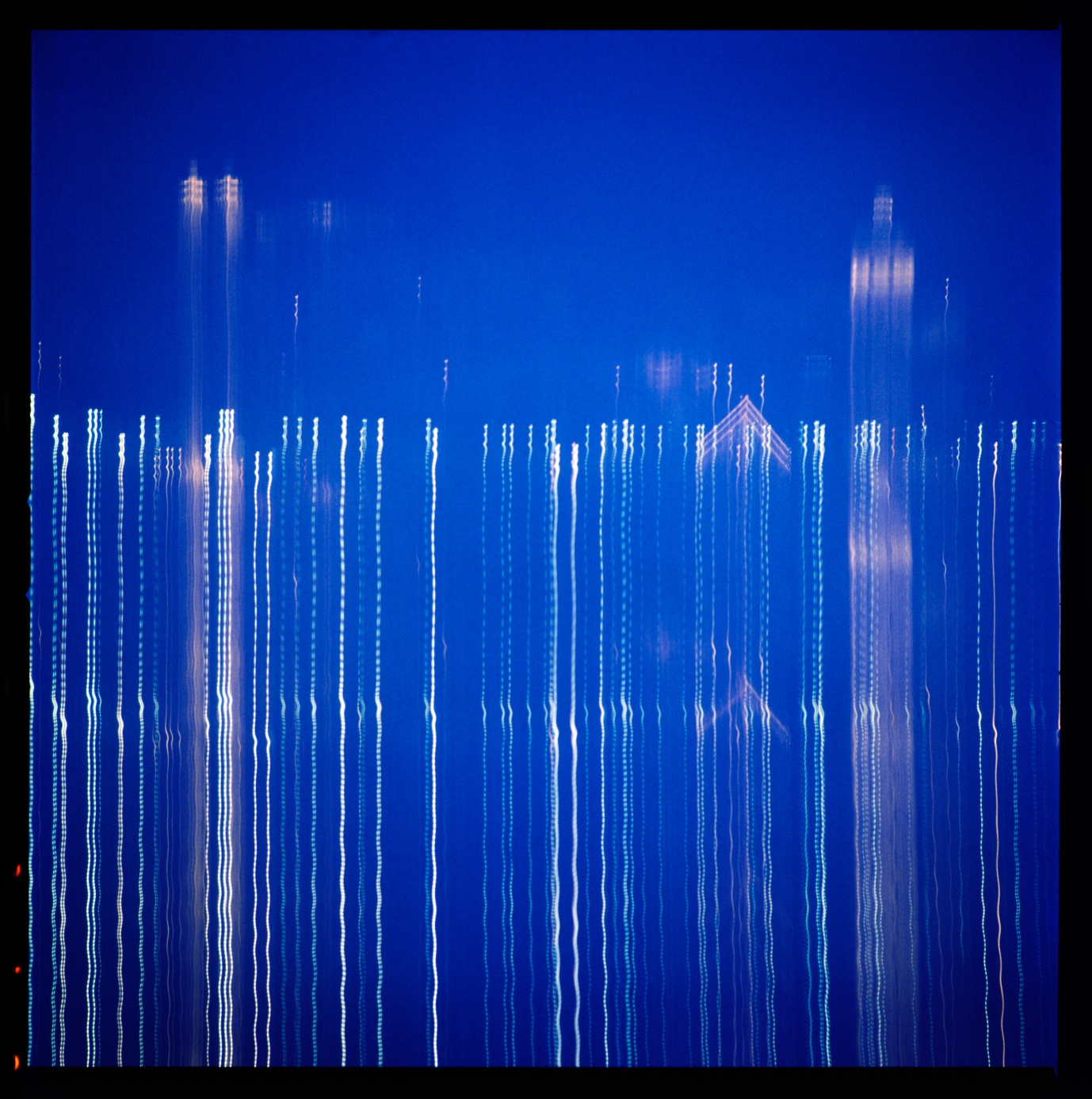
Apart from monochromatic color use, the black and white works created by Lothar Wolleh have a similar feature of limited color use. The photographer uses it to concentrate on the meaning rather than colorfulness and accuracy of the portrayed matters. Indeed, as it is seen in Image 3, the portrait of Otto Piene, the use of only black and white instead of using a colored film, helps the photographer emphasize a person as a focal point of the photograph (Wolleh, “Otto Piene”). This photograph is somewhat similar to the monochromatic paintings by Yves Klein in terms of the depths of the dominant color, which conceptualizes the obscurity of the social environment and the freedom of its interpretations.
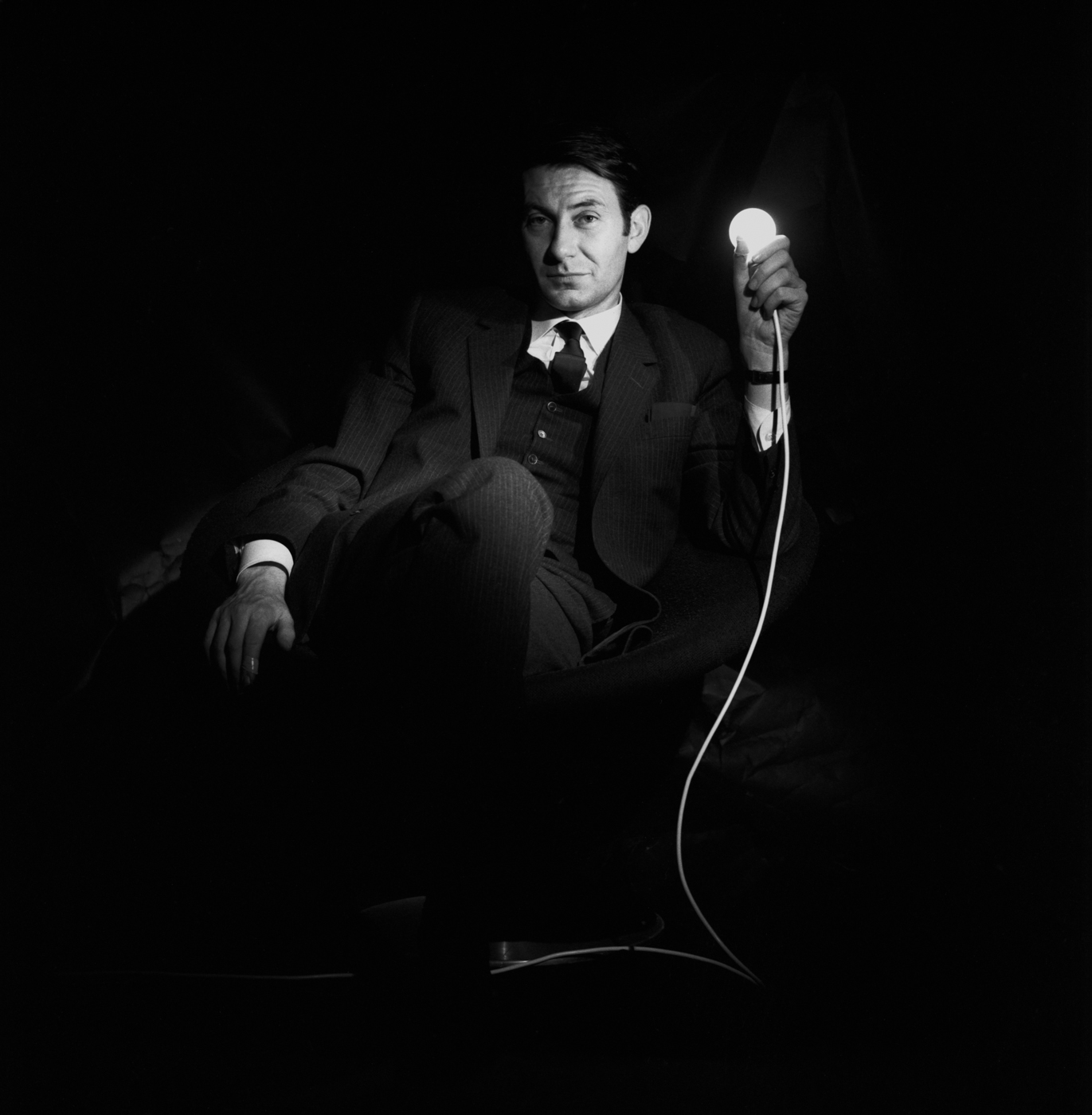
The minimalism of composition is another similarity between Yves Klein and Lothar Wolleh. Both artists used minimum elements of visual representation to render their narratives through their artworks. For example, the use of emptiness in the artworks of both artists is intentional and conveys a narrative of a space that is free for occupying with imagination. As shown in Image 4, Yves Klein leaves the spaces of abstract forms unpainted in his Untitled Cosmogony (COS 20), June 1960, to imply the role of viewers’ perception in the formation of art (Klein “Untitled Cosmogony (COS 20)”).
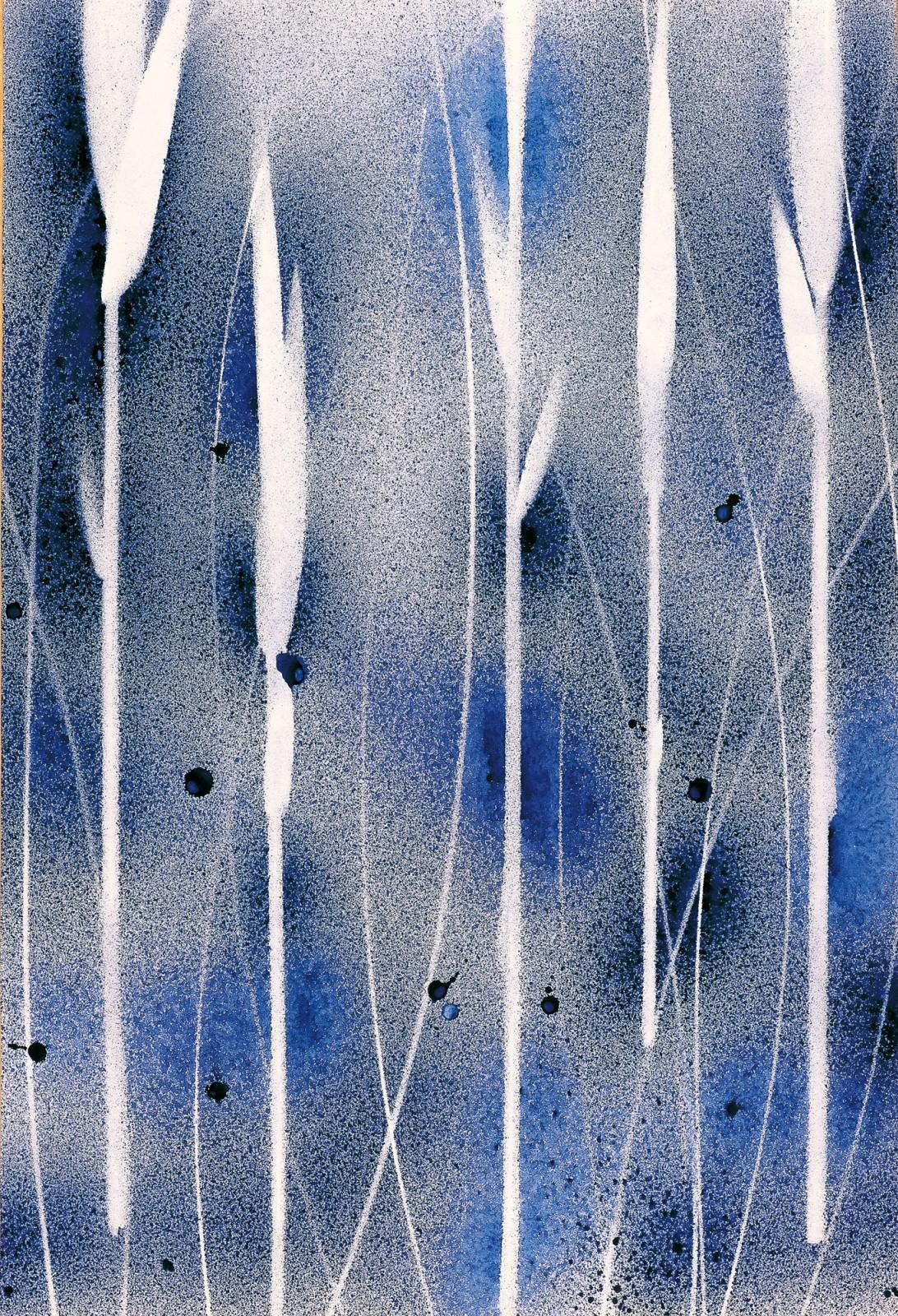
Similarly, in Lothar Wolleh’s photograph entitled Work by Heinz Mack Photographed by Lothar Wolleh (See Image 5), the use of a simple and minimalistic composition with much emptiness in the picture denotes the abstract and symbolic representation of reality (Wolleh, “Work by Heinz Mack Photographed by Lothar Wolleh”).
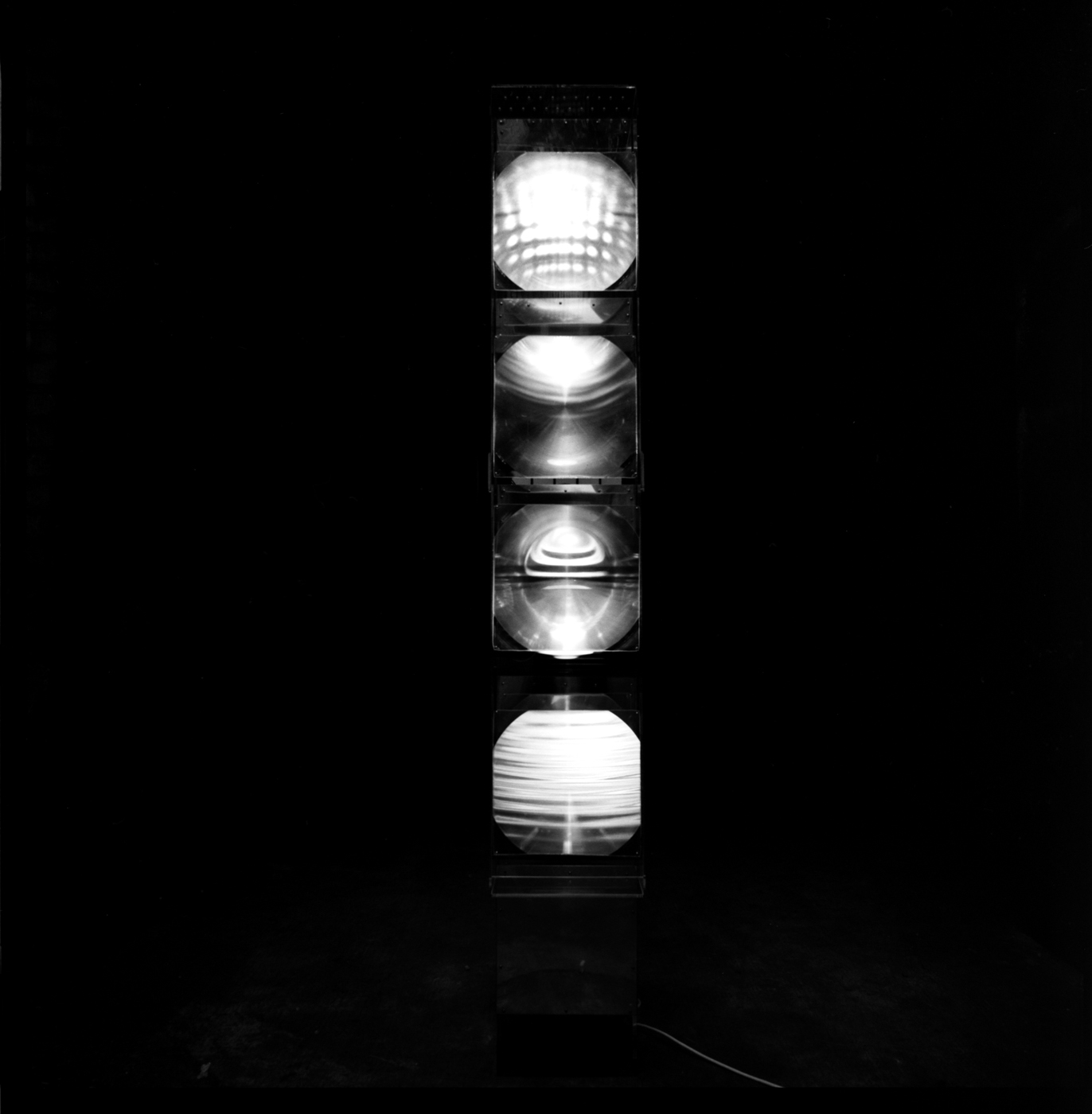
Thus, the artworks of the two artists are very similar in terms of composition, narrative, color use, and the impact of the Nouveau Réalisme on their style. Indeed, the characteristic features of the uniqueness of perception of reality through the lens of the freedom of thought, conceptualism, abstractionism, and minimalism allowed the artists to convey the complexity of the post-war social reality.
Differences between Yves Klein’s and Lothar Wolleh’s Works
Although the approach to the use of color in the artworks of the two analyzed artists was discussed within the framework of their similar features, it is a subject of differences as well. In particular, despite the use of a minimal number of colors, Klein paid more attention to the shades and qualities of bright colors while Wolleh persisted in making black and white photographs. Indeed, according to Malis, “Yves Klein’s works were dominated by a specific shade of ultramarine blue – International Klein Blue” (75). It was essential for the painter to develop an innovative color and art material which was composed of “ultramarine pigment and synthetic binder and was patented in 1960 through the use of an envelope soleau (a French “proof of invention”)” (Malis 75). Therefore, while the works of Wolleh might be equally perceived through physical and digital environments, Klein’s monochromatic works should be experienced in person to appreciate the combination of the novel art material.
As stated by Jackson, the conceptual meaning of Yves Klein’s monochromatic works, and those using the ultramarine blue color, in particular, is in the depiction of the changing world after the war. In this world, progress and development are the driving forces for human advancement socially, philosophically, and artistically. This is a distinctive feature that differs Klein’s works from the photographs made by Wolleh since the photographs are more concentrated on the place of a human being in the new social environment that has been destroyed by war. At the same time, both artists have a significant degree of positivity and belief in the future under the influence of the changing world.
Furthermore, the artworks and the styles of the two artists differ in terms of their content or substance representation. The ultimate difference is in the inclination of Lothar Wolleh to portraits of people usually taken from a distance and altered using photography techniques. For example, as it is demonstrated in Image 5, the photograph entitled Gerhard Ritcher, the figure of the man is placed in the center of the photograph denoting the reality of a human being in a social environment (Wolleh, “Gerhard Ritchter”).
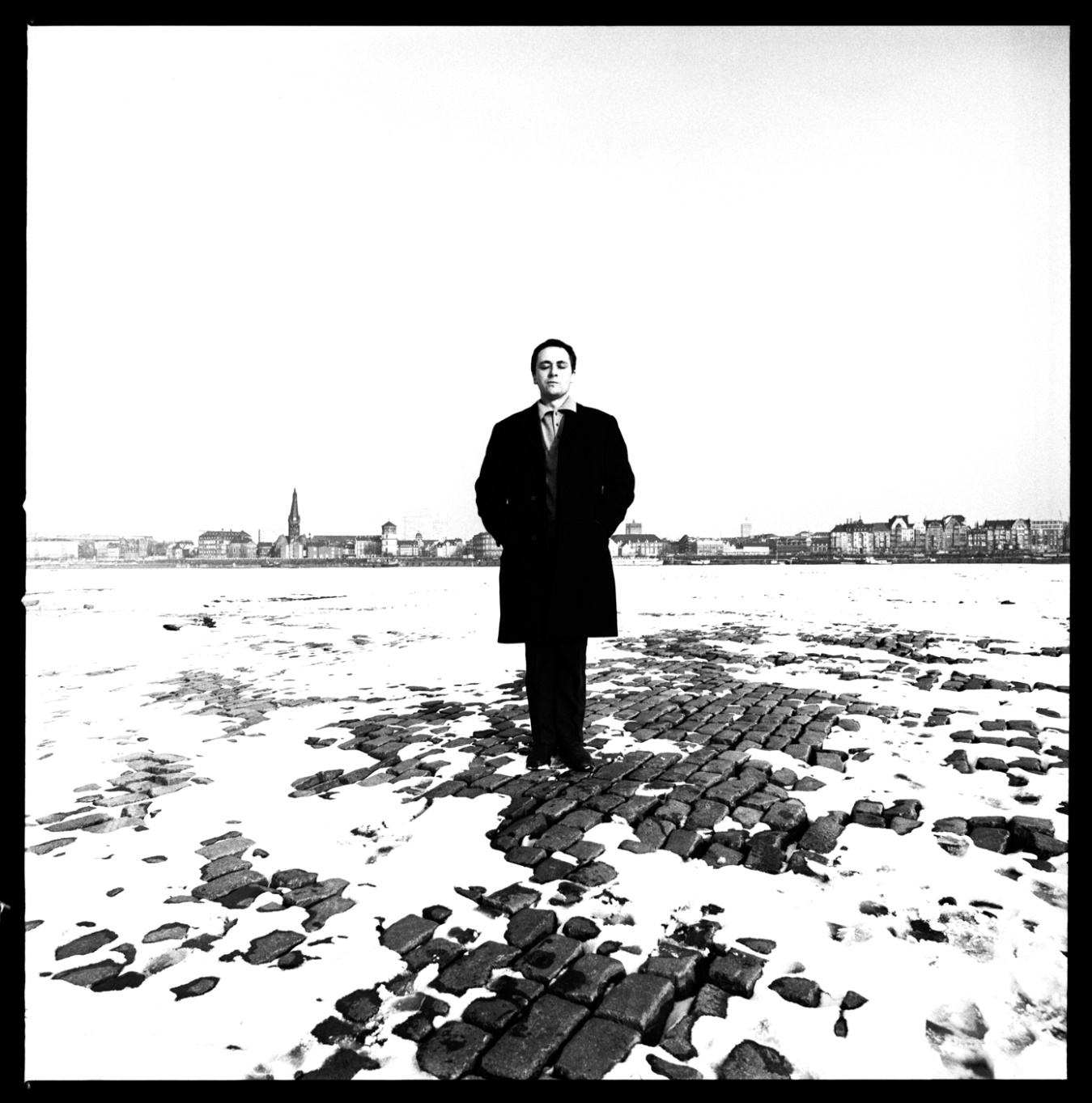
However, the subject matter depicted in the paintings created by Yves Klein is deprived of concrete images and does not include portraits. On the contrary, the artworks by Klein are abstract and symbolic without the conventional visual forms. In such a manner, the use of different subject matters in their artworks, the artists deliver different intent. On the one hand, Yves Klein intends to demonstrate a unique perceptionist view on reality that is fluid and subjective to any viewer. On the other hand, as it is shown in Image 6, Untitled Yellow and Pink Monochrome (M 36), 1955, the two colors, pink and yellow, are incorporated in an abstract and textured way (Klein, “Untitled Yellow and Pink Monochrome (M 36)”). The glimpses of pink seen behind the surface of yellow emerge sporadically without forming a particular form or figure, which leaves the image to interpretation and symbolic perception. In other words, the author does not imply a specific meaning but allows the art to speak for itself and convey an abundance of interpretations.
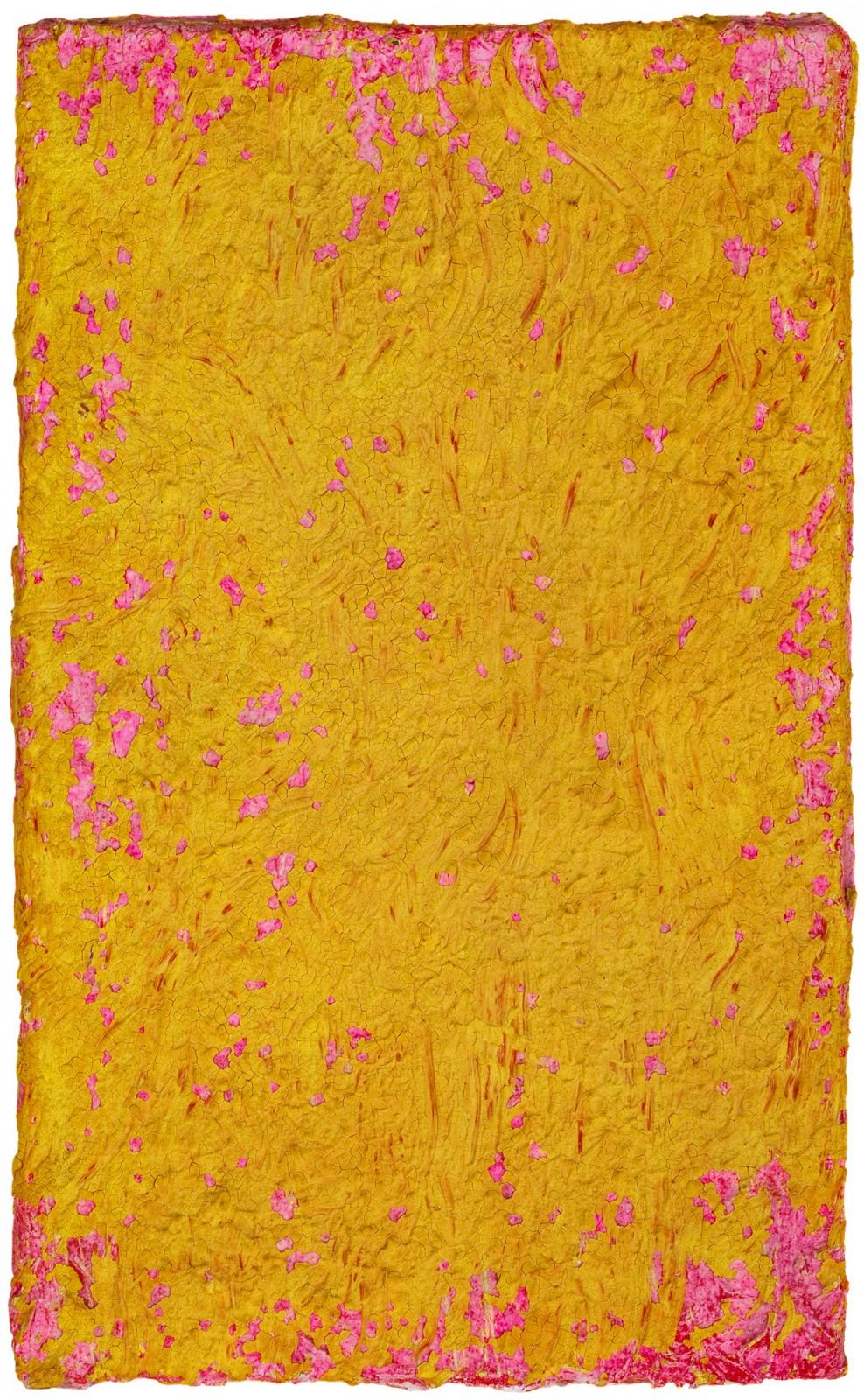
On the other hand, Lothar Wolleh’s photographs contain a significant part of exactness in the way the figures in the portraits are presented, which implies the unique view of the photographer on reality. However, the audience is less free in the perception of the artworks since it is bound to the view of the artist. Therefore, in terms of content and intent, the works of the two artists are different. This difference might be further explained using the term “immaterialism” that was a particular feature of Yves Klein’s style (Johnson 171). Indeed, he tended to convey the essence of the surroundings and the very existence without any material representation, unlike Wolleh, who concentrated on materialism in the visual presentation. Nonetheless, the two artists still have the same uniting characteristic of implying freedom of symbolic perception of reality.
Another important difference between the two artists’ works is the format of their art. Indeed, Yves Klein was freer in the representation of his works, which is why he varied the sizes, dimensions, and other characteristics of his works. Lothar Wolleh was very strict with the composition and framing, which signified his unique photography style. An unusual framing in the form of a square provided the photographs an unusual look and emphasized the central placement of figures in the pictures (“Masters of Photography: Lothar Wolleh”). Thus, the difference of approaches to the formatting of the artworks influences the perception and interpretation, thus demonstrating the distinction between the styles of Lothar Wolleh and Yves Klein despite their creative work performed in a similar cultural, social, and historical context.
Conclusion
In summation, the conducted contextual analysis of the artworks produced by French painter Yves Klein and German photographer Lothar Wolleh demonstrated the predominance of similarities over differences in their styles. The presence of both artists in the same historical and geographical context, namely post-war Europe, and their affiliation with the movement of Nouveau Réalisme predetermined their similar abstract and interpretive perception of reality through art. Despite the differences in colorwork, format, and materialistic aspects of the subject matter, both artists used minimalistic composition, monochromatic color, the symbolism of emptiness, and conceptual narrative to render the controversy of post-war reality. These elements of art allowed the painter and photographer to incorporate the themes of loneliness, isolation, and destruction into the proclamation of a new beginning and strong human potential for a better future.
References
Jackson, Kitty. “Symbolism in Art: Yves Klein’s Blue.” Artdependence, 2017. Web.
Johnson, Jewell Homad. “Hiding in the Open: Religious Art after Abstraction with Joseph Beuys, Yves Klein, and Andy Warhol.” Literature & Aesthetics 30.1 (2020).
Klein, Yves. “Untitled Blue Monochrome (IKB 3).” Yves Klein. n.d.Web.
—. “Untitled Cosmogony (COS 20).” Yves Klein. n.d. Web.
—. “Untitled Yellow and Pink Monochrome (M 36).” Yves Klein. n.d. Web.
Malis, Jon. “Accurate Representations of Digital Copyslides: The Colour of Yves Klein.” Proceedings of EVA London, vol. 2020, no. 30, 2020, pp. 75-77.
“Masters of Photography: Lothar Wolleh.” Photoion, 2018. Web.
Watanabe, Yohei. Poetics of Nouveau Réalisme. Bigaku, vol. 70, no. 2, 2019, pp. 85-96.
Wolleh, Lothar. “Gerhard Ritchter.” Lothar Wolleh. n.d. Web.
—. “Otto Piene.” Lothar Wolleh. n.d. Web.
—. “Place of Light.” Lothar Wolleh. n.d. Web.
—. “Work by Heinz Mack Photographed by Lothar Wolleh.” Lothar Wolleh. n.d. Web.